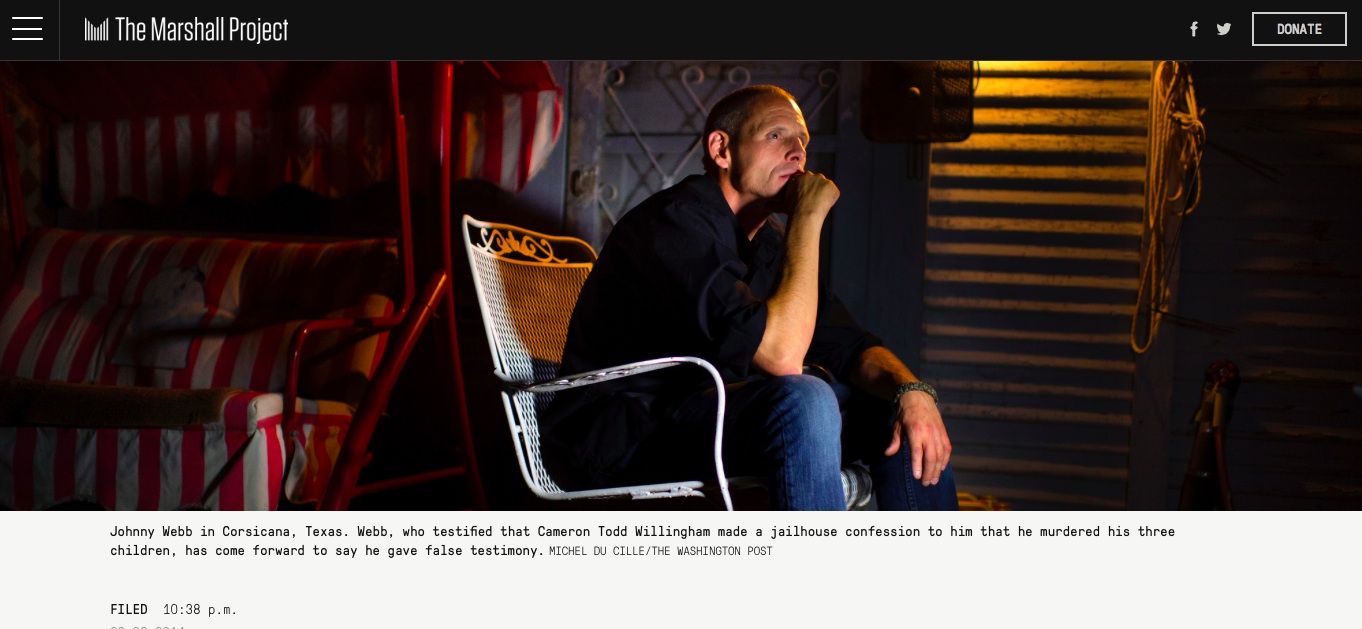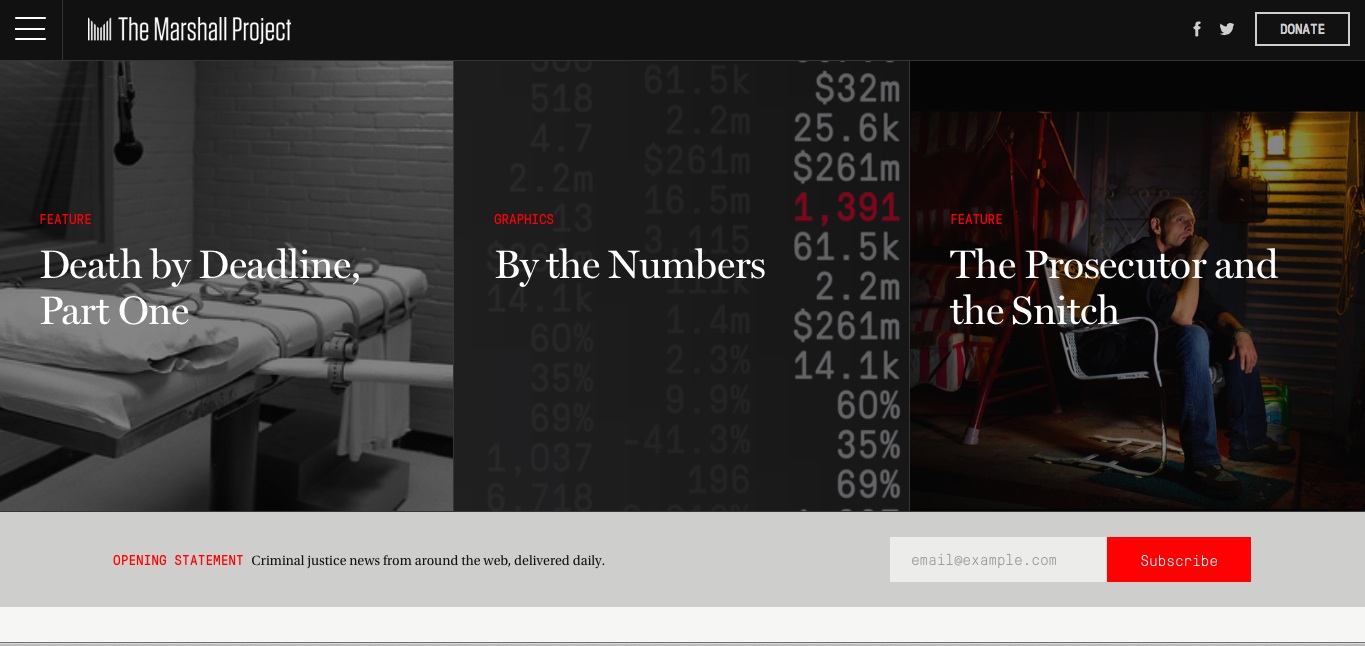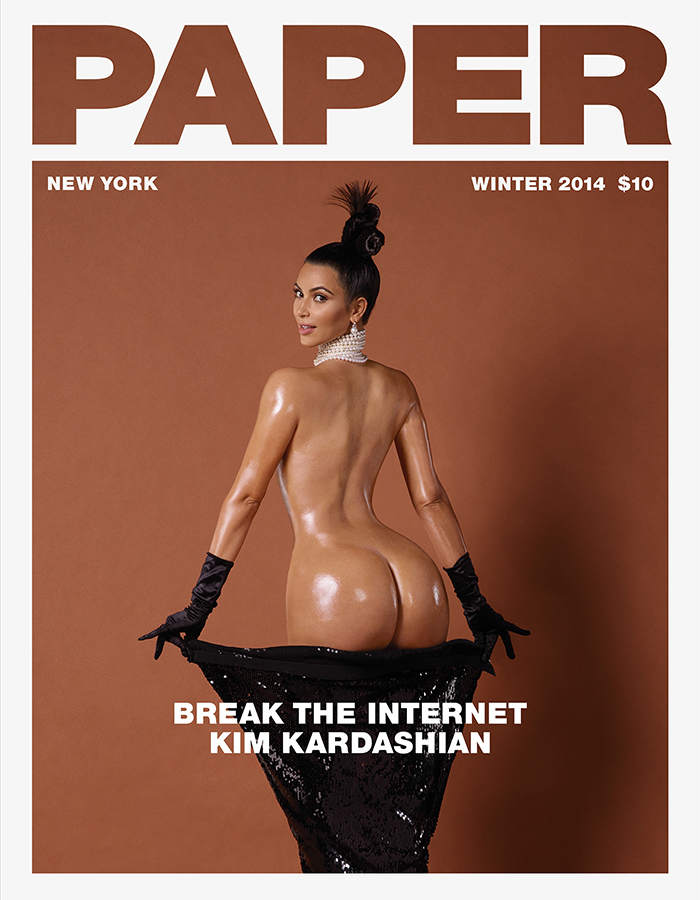



The Marhsall Project team celebrates as they pushed the SEND button for launch of project. Editor Bill Keller far left and Gabriel Dance, managing editor, right
When Marshall Project editor Bill Keller left The New York Times to head up this not-for-profit, non-partisan newsroom dedicated to covering America's criminal justice system, he mentioned in an interview that he saw the Marshall Project as a single-issue site with a million story possibilities, covering sentencing reforms, prosecutorial misconduct, and the war on drugs. “The stories out there are really rich, but they add up to something,” he said.
Now the Marshall Project is out and, upon first review, it is obvious that, indeed, the unusual mix of stories do add up to something unlike what we have seen before in terms of devoting space, a heavily concentrated effort and,most importantly, facts and numbers for stories to which the mainstream media does not offer much, if any, space.
We had the pleasure of having Gabriel Dance, managing editor for digital journalism, as a guest speaker at our Columbia University class last spring. He had just decided to leave The Guardian (think the award-winning NSA Files: Decoded) to join Bill Keller at the then newly founded Marshall Project.
The signature of Gabriel Dance is very present in this first edition of the Marshall Project, especially with the presentation of data.
The website is attractively designed, with a simplicity that is ideal to package the intense content. Every story is a narrative. Every story contains elements of multimedia.
We can learn much from how stories are approached, headlines written and short summaries included to give us one last pull into the stories. Labels above headlines locate the “topic”, as in “Life Inside” (for prison story),
For example:
Death by Deadline, Part One
How bad lawyering and an unforgiving law cost condemned men their last appeal.
The Prosecutor and the Snitch
Did Texas execute an innocent man?
Dying in Attica
An aging bank robber faces the end.
No Country for Young Men
Junior Smith was a troubled kid who needed help. Instead, West Virginia sent him to jail.
I found it interesting that, instead of inviting immediate comments at the end of stories, the Marshall Project invites readers to submit a letter to the editor.
The Marshall Project is a collection of investigative stories and lean back features that most newspapers can only afford to do as special projects. It is, indeed, a catalog of storytelling ideas, in-depth journalism at its best and designed to remind us that simplicity in editorial design is even more essential when the content is anything but simple.
Congratulations to Bill Keller, Gabriel Dance and the team of the Marshall Project. We will be watching.
For further reading
Pages we definitely don’t like


Paper does it again and Photo Shop plays a key role, although the protagonist here is Kim Kardashian in all her splendor.
The Champagne image we had seen before, and, it is, without a doubt, the result of Photo Shop tricks. I believe that as long as the readers are aware (they are not stupid!), it is OK, but here supposedly the editors confessed to the “fake” pictures only after publication. Just as you can imagine, la Kardashian's images generated plenty of traffic for the Paper site: November 12, their traffic hit 6.6 million page views with 5 million of those being unique visitors.
For more:
http://www.adweek.com/news/technology/10-big-digital-marketing-stats-week-nov-10-14-161318